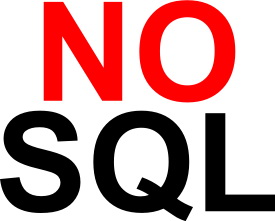8 Top Open Source NoSQL Databases in Java
NoSQL is on the rise. Many enterprises and users have replaced MySQL databases with NoSQL databases. NoSQL makes it easier to analyze unstructured data, so developers must be aware of the trends and tools that exist in the NoSQL world.

1. Terrastore
New document storage technology can provide advanced scalability and elasticity without sacrificing consistency. Terrastore is based on Trrracotta, which relies on an industry-proven, fast (and cool) clustering technology.
2.Neo4j
Open source graph database, implemented in Java. The developers describe Neo4j as "an embedded, disk-based, fully transactional Java persistence engine that stores data structured in graphs rather than in two-dimensional tables"
3. Voldemort
Distributed key-value storage system. Essentially a large, distributed, persistent, fault-tolerant hash table. For applications, it can use O/R mapping tools like active-record or hibernate, which can provide horizontal expansion and higher availability, but will lose huge convenience.
4. HBase
Apache HBase was developed by Chang et al of Google. It is another open source, distributed, versioned, non-relational database following the distributed storage system Bigtable developed by it.
5.InfoGrid
A Web graph database with many additional software components, making it easy to develop Rest-ful web applications based on graph databases.
6.HyperGraphDB
Universal, scalable, portable, embedded, open source data storage mechanism. It is a graph database specially designed for artificial intelligence and web semantic projects, and can also be used as an embedded object-oriented database for projects of different sizes.
7.Perst
Perst is an open source implementation of McObject, a dual-license, object-oriented embedded database system (ODBMS). One version is an embedded database developed in Java, and the other is implemented in C# (for Microsoft .NET Framework applications).
8.NeoDatis ODB
A simple object database running on Java, .Net, Google Android, Groovy and Scala.

Hot AI Tools

Undresser.AI Undress
AI-powered app for creating realistic nude photos

AI Clothes Remover
Online AI tool for removing clothes from photos.

Undress AI Tool
Undress images for free

Clothoff.io
AI clothes remover

AI Hentai Generator
Generate AI Hentai for free.

Hot Article

Hot Tools

Notepad++7.3.1
Easy-to-use and free code editor

SublimeText3 Chinese version
Chinese version, very easy to use

Zend Studio 13.0.1
Powerful PHP integrated development environment

Dreamweaver CS6
Visual web development tools

SublimeText3 Mac version
God-level code editing software (SublimeText3)

Hot Topics
 Square Root in Java
Aug 30, 2024 pm 04:26 PM
Square Root in Java
Aug 30, 2024 pm 04:26 PM
Guide to Square Root in Java. Here we discuss how Square Root works in Java with example and its code implementation respectively.
 Perfect Number in Java
Aug 30, 2024 pm 04:28 PM
Perfect Number in Java
Aug 30, 2024 pm 04:28 PM
Guide to Perfect Number in Java. Here we discuss the Definition, How to check Perfect number in Java?, examples with code implementation.
 Random Number Generator in Java
Aug 30, 2024 pm 04:27 PM
Random Number Generator in Java
Aug 30, 2024 pm 04:27 PM
Guide to Random Number Generator in Java. Here we discuss Functions in Java with examples and two different Generators with ther examples.
 Armstrong Number in Java
Aug 30, 2024 pm 04:26 PM
Armstrong Number in Java
Aug 30, 2024 pm 04:26 PM
Guide to the Armstrong Number in Java. Here we discuss an introduction to Armstrong's number in java along with some of the code.
 Weka in Java
Aug 30, 2024 pm 04:28 PM
Weka in Java
Aug 30, 2024 pm 04:28 PM
Guide to Weka in Java. Here we discuss the Introduction, how to use weka java, the type of platform, and advantages with examples.
 Smith Number in Java
Aug 30, 2024 pm 04:28 PM
Smith Number in Java
Aug 30, 2024 pm 04:28 PM
Guide to Smith Number in Java. Here we discuss the Definition, How to check smith number in Java? example with code implementation.
 Java Spring Interview Questions
Aug 30, 2024 pm 04:29 PM
Java Spring Interview Questions
Aug 30, 2024 pm 04:29 PM
In this article, we have kept the most asked Java Spring Interview Questions with their detailed answers. So that you can crack the interview.
 Break or return from Java 8 stream forEach?
Feb 07, 2025 pm 12:09 PM
Break or return from Java 8 stream forEach?
Feb 07, 2025 pm 12:09 PM
Java 8 introduces the Stream API, providing a powerful and expressive way to process data collections. However, a common question when using Stream is: How to break or return from a forEach operation? Traditional loops allow for early interruption or return, but Stream's forEach method does not directly support this method. This article will explain the reasons and explore alternative methods for implementing premature termination in Stream processing systems. Further reading: Java Stream API improvements Understand Stream forEach The forEach method is a terminal operation that performs one operation on each element in the Stream. Its design intention is






